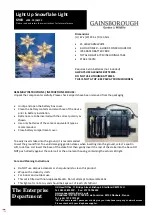
BENCH BLEEDNG THE MASTER CYLINDER
Whenever a master cylinder has been removed
from a vehicle or a new one is being installed,
the master cylinder must be bench bled. Failure
to bench bleed is the main reason for unsuccess-
ful master cylinder replacement. Bench bleeding
greatly decreases the chance that any air will
be caught in the cylinder upon reinstallation.
Follow this procedure:
1) Plug outlet holes of the master cylinder and
gently clamp it in a vise with the push rod end
slightly elevated. NOTE: Damage may result if
master cylinder is clamped by the bore or if
reservoirs are clamped too tightly.
) Fill the master cylinder with an approved type
brake luid and keep it illed at all times during
the procedures.
3) Remove a plug from the master cylinder and
attach the proper adapter to this master cylinder
outlet port. Connect the pump tube to the reservoir
jar and the jar tube to the adapter (FIGURE 19).
4) Operate the pump and observe air and luid
lowing into the reservoir until clear, bubble-free
luid appears.
5) Plug the outlet tightly and repeat step 4 on the
other outlet ports.
6) Clamp master cylinder in a vise with the push rod
end down slightly. Slowly slide the master cylinder
push rod back and forth about
1
⁄
8
”, until no air
bubbles can be seen in the reservoirs.
7) Remount the master cylinder with the push rod
end up and follow steps 3 & 4 on all outlet ports.
Plug ports tightly. The master cylinder is now free
of air and ready to install.
BRAKE BLEEDING
FIGURE 19: BENCH BLEEDING
Page Number - 4
Form 8433
















































